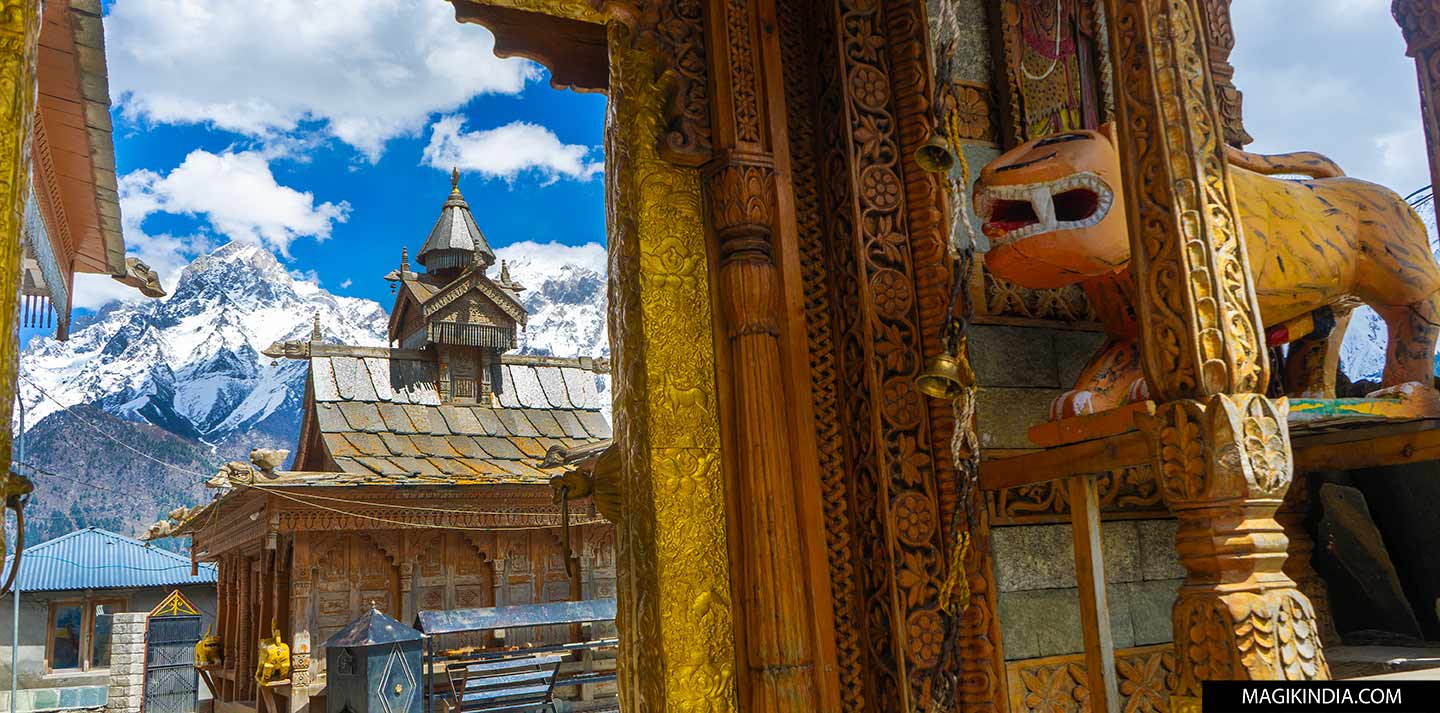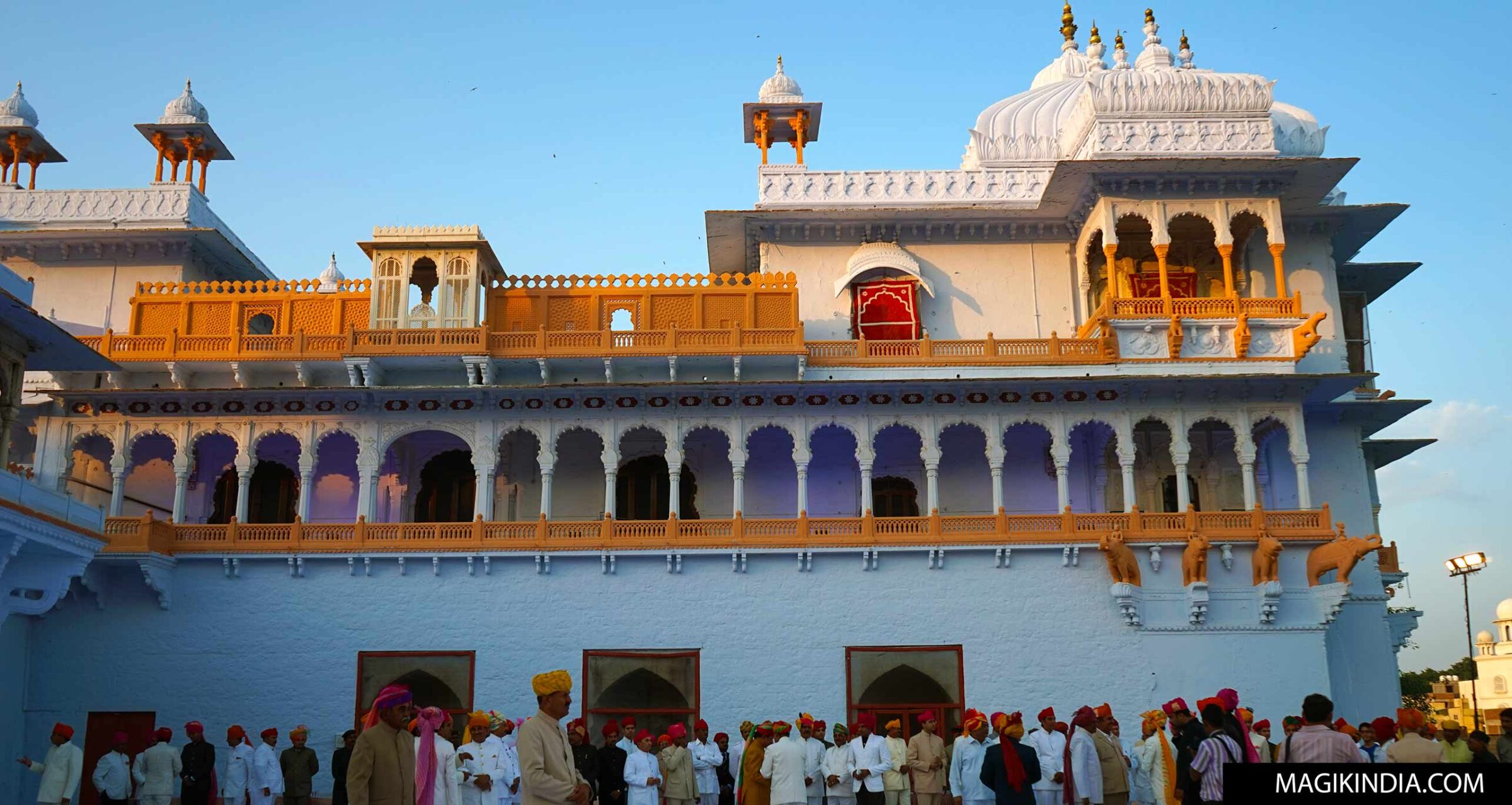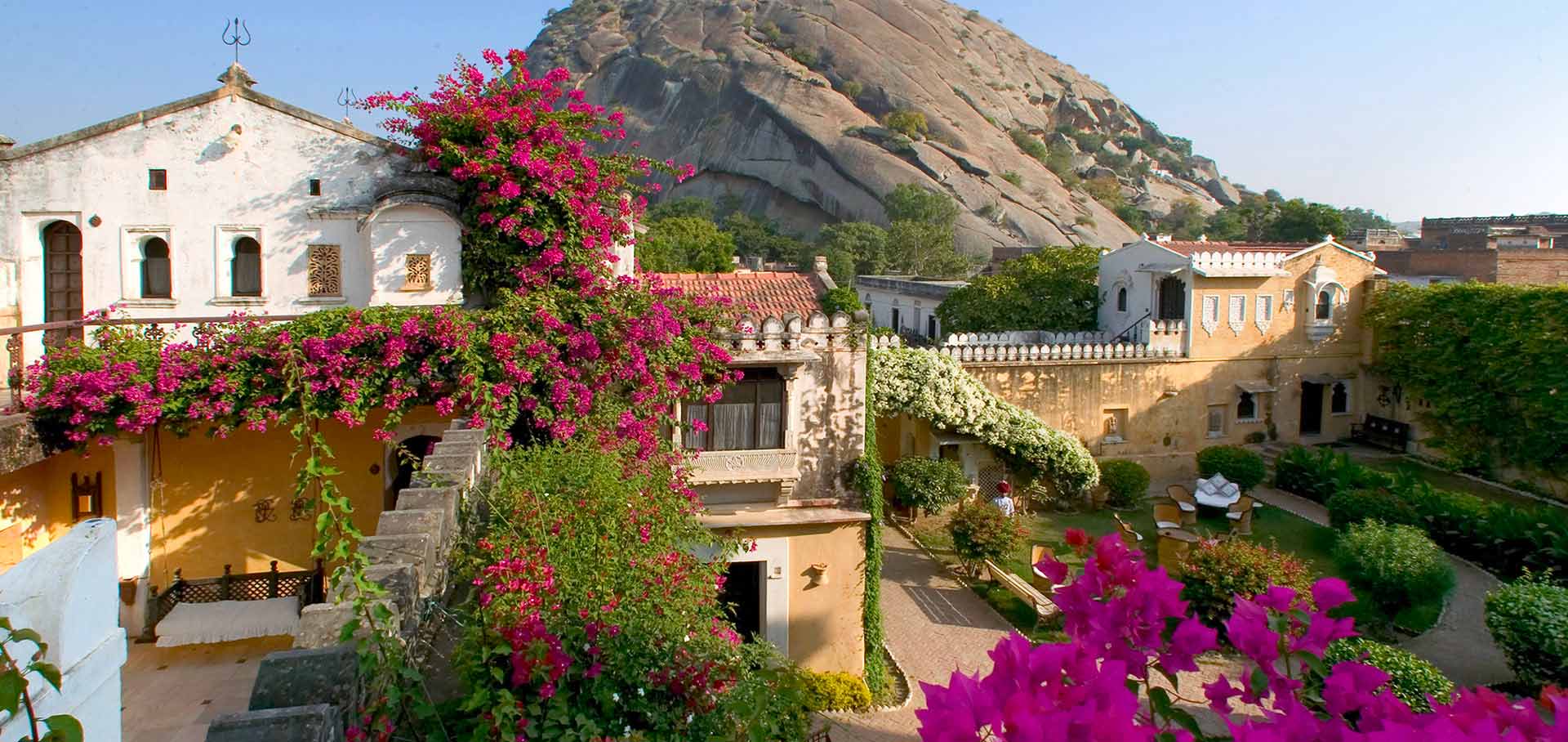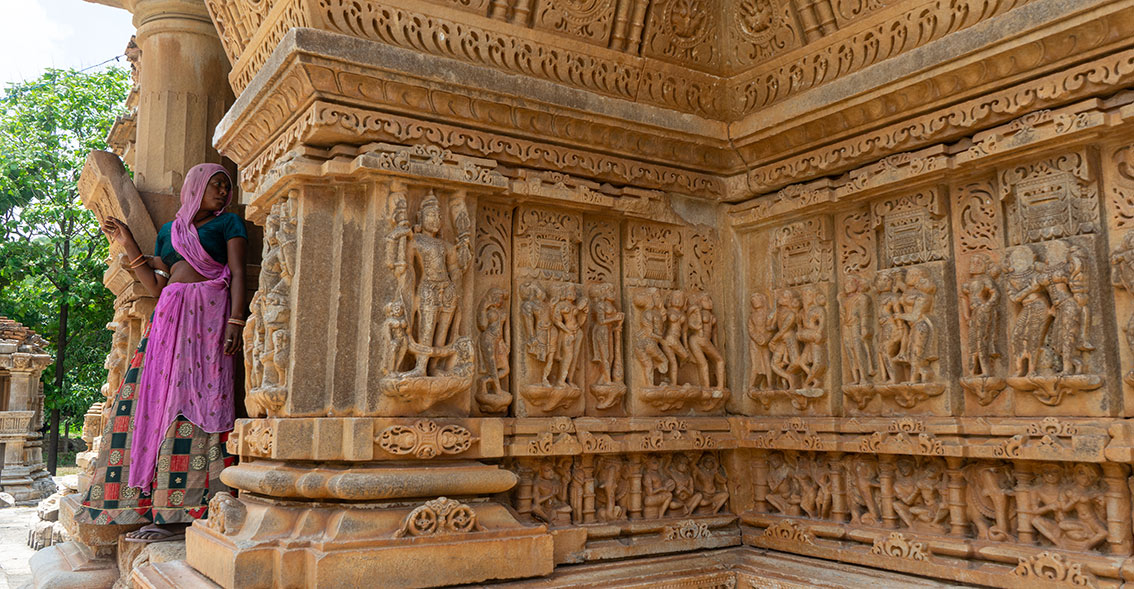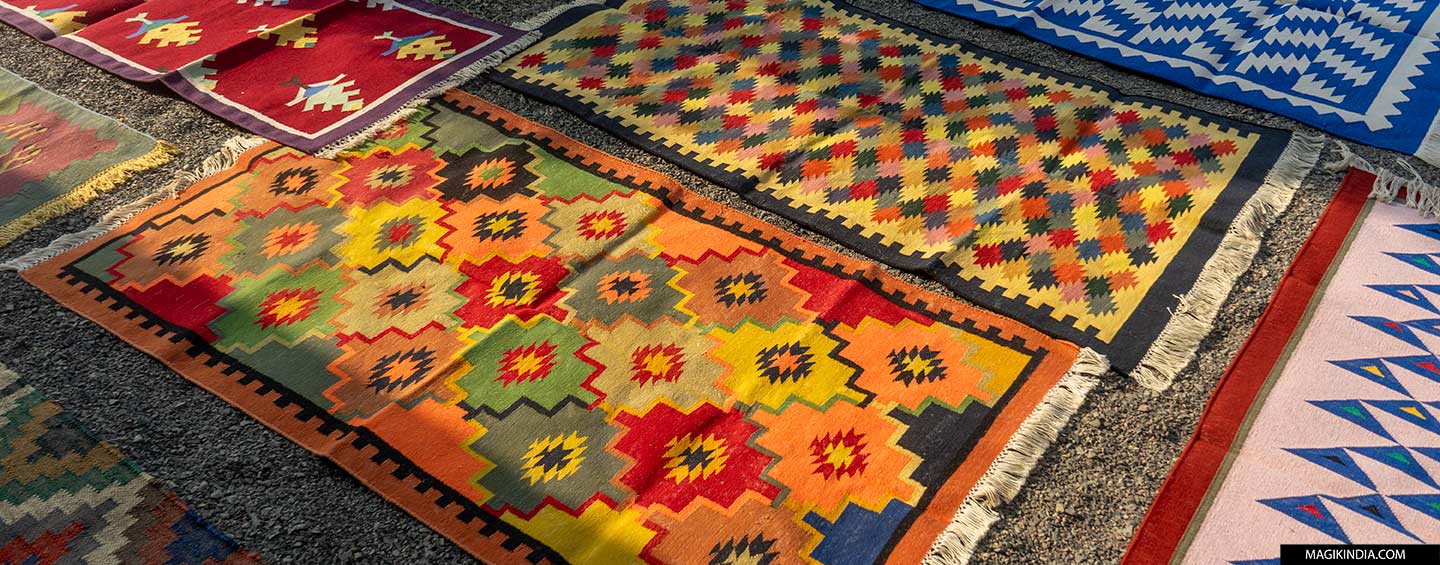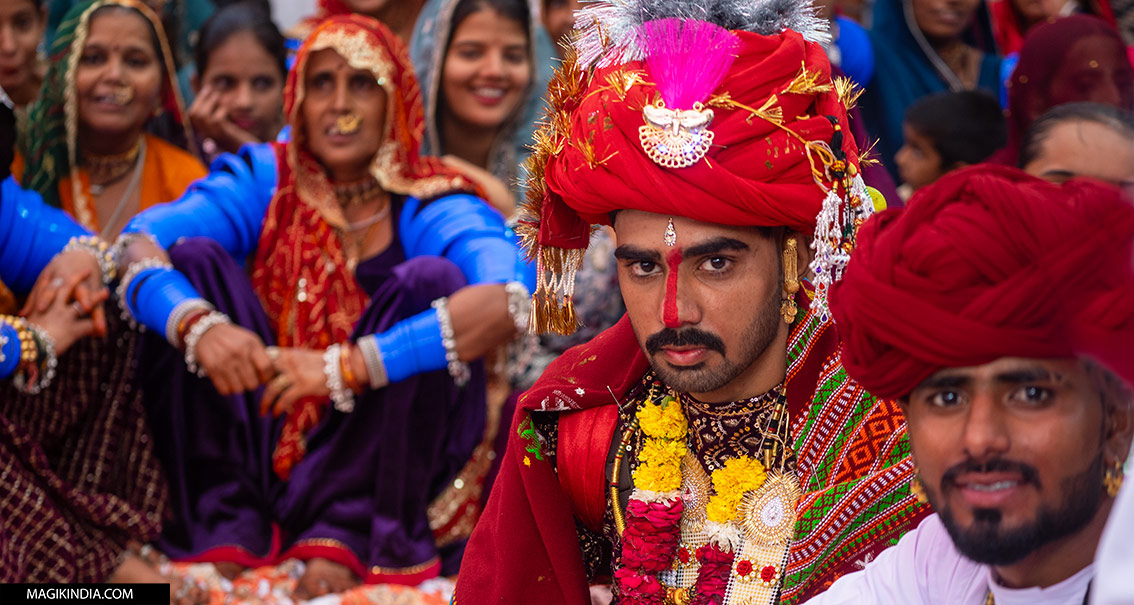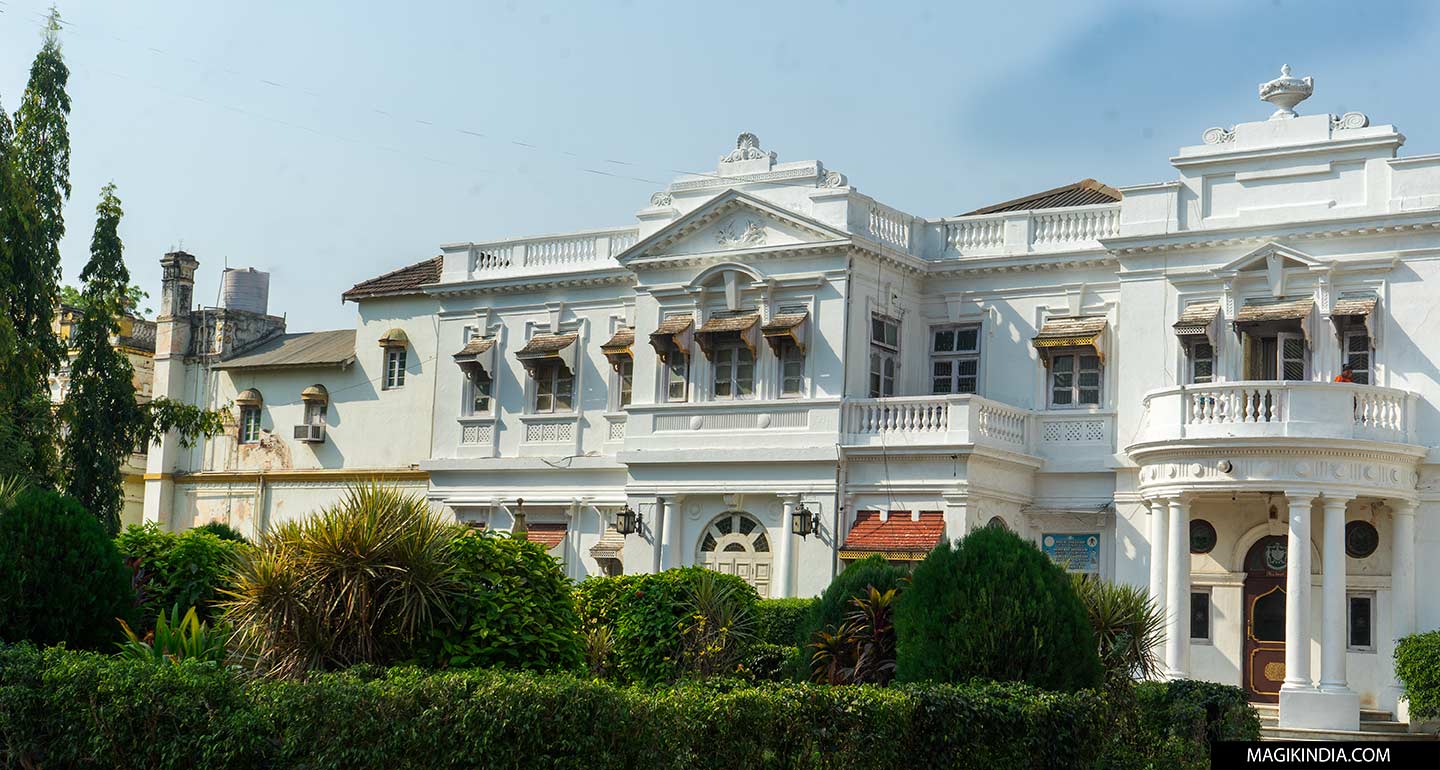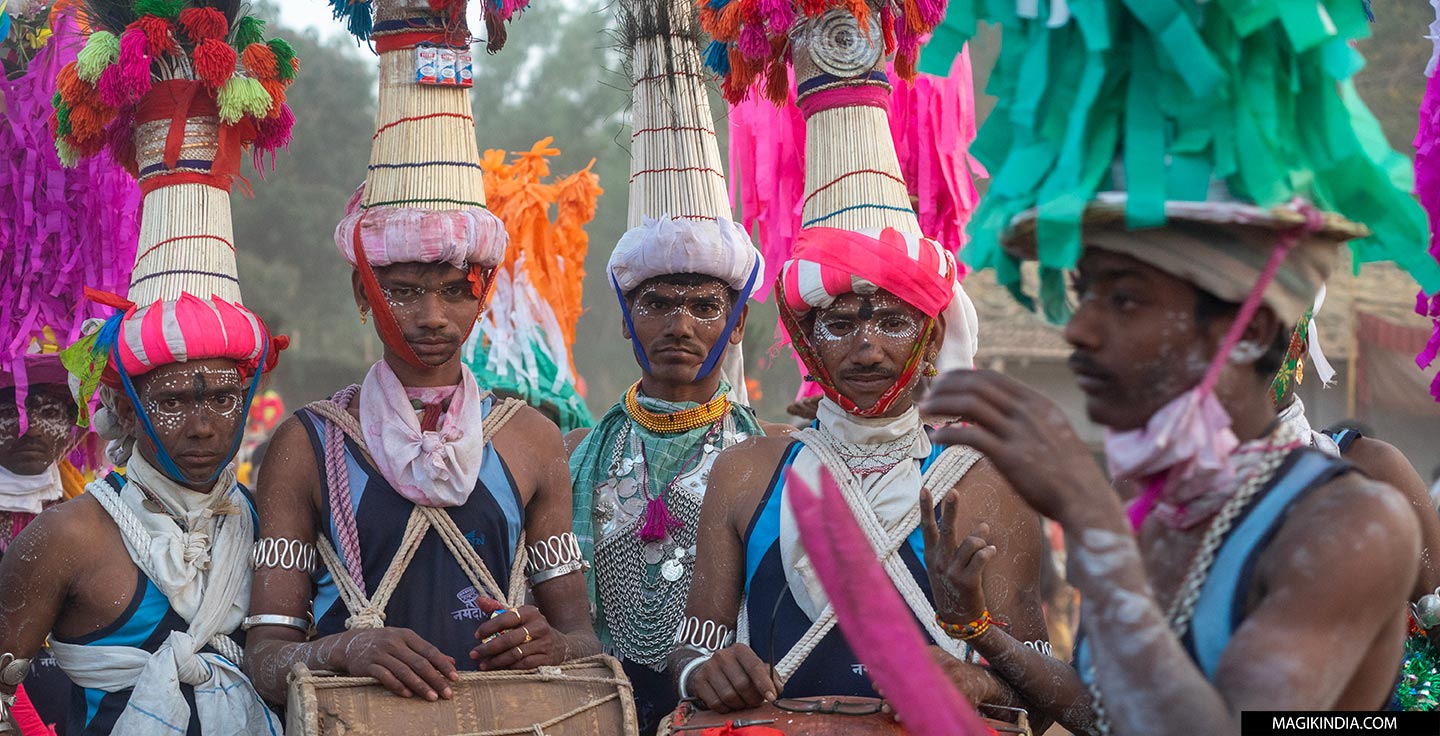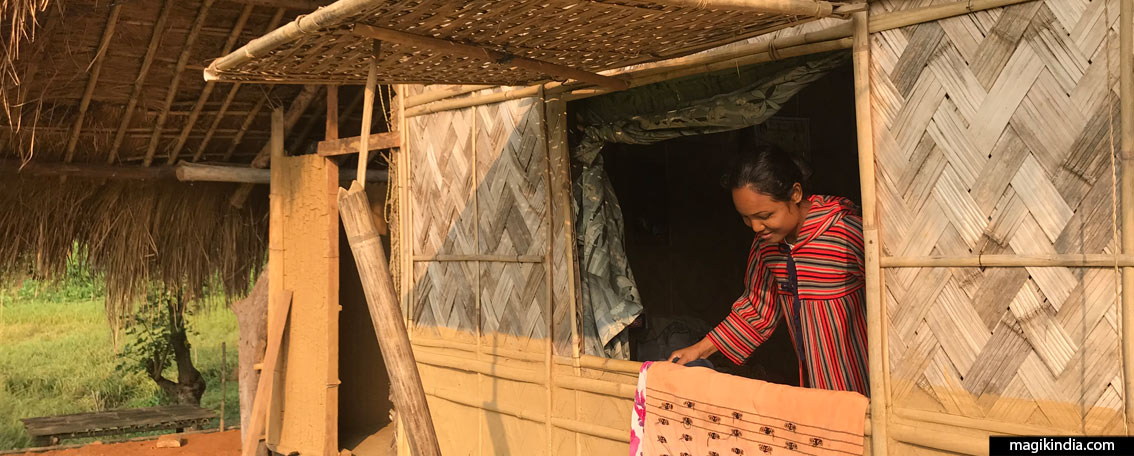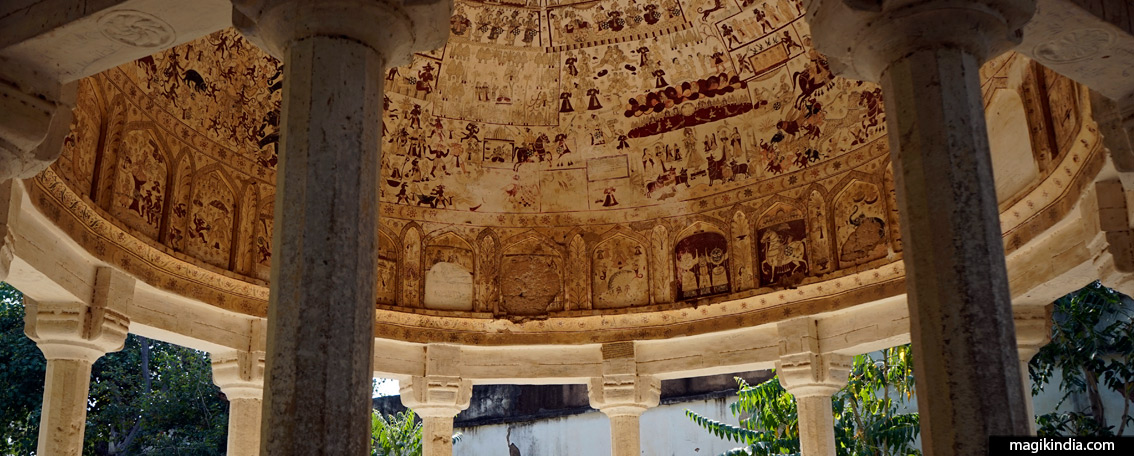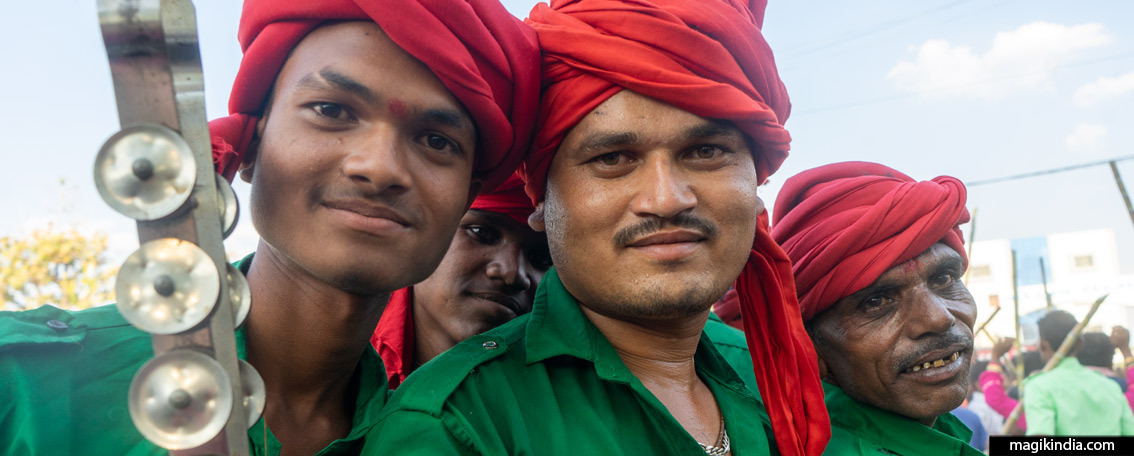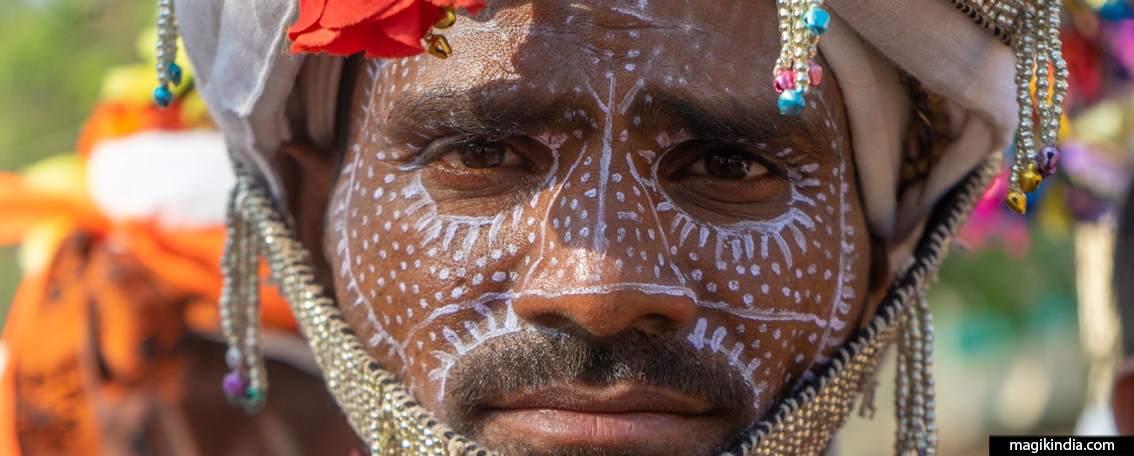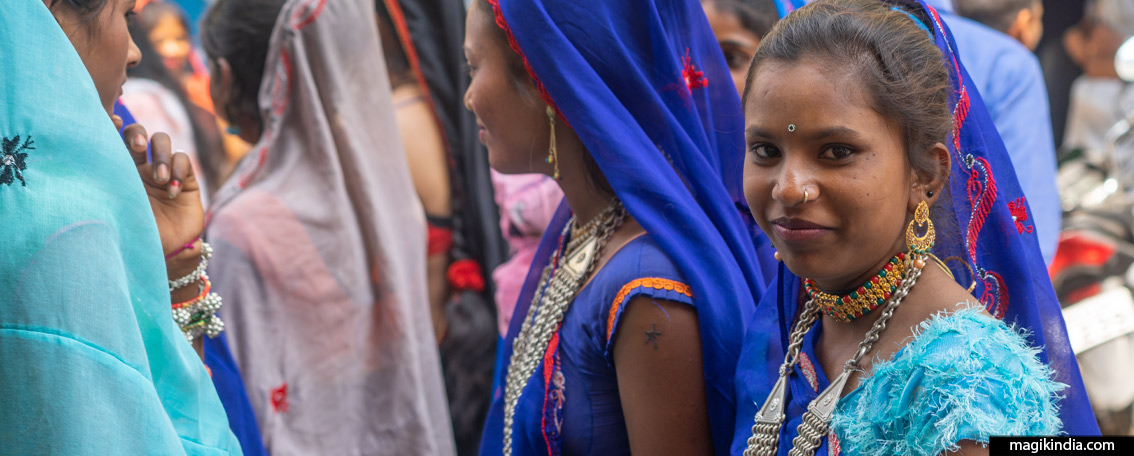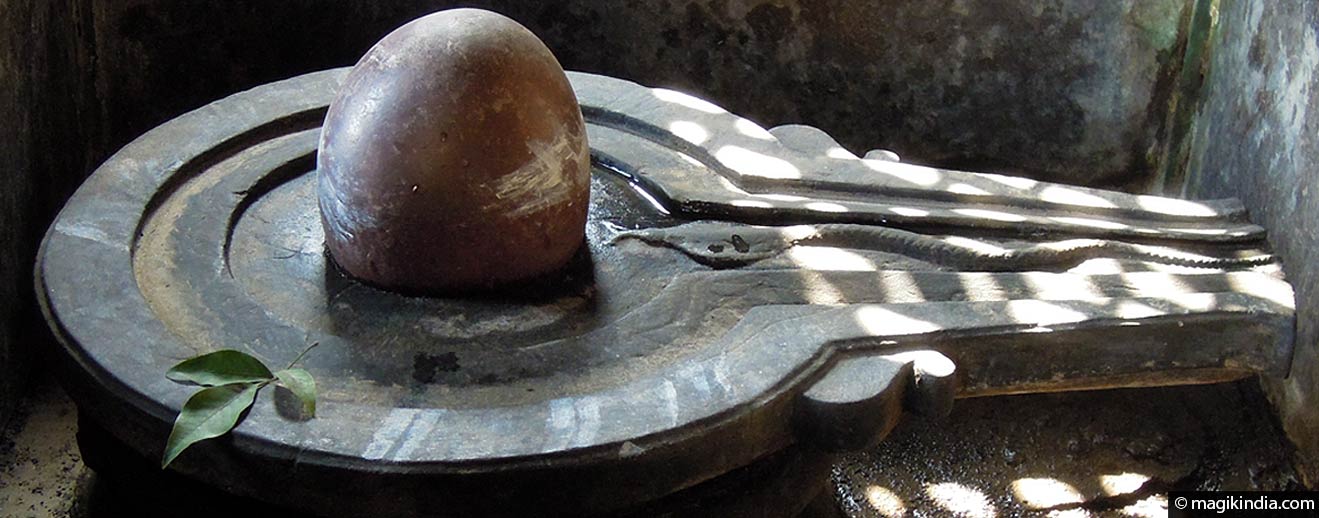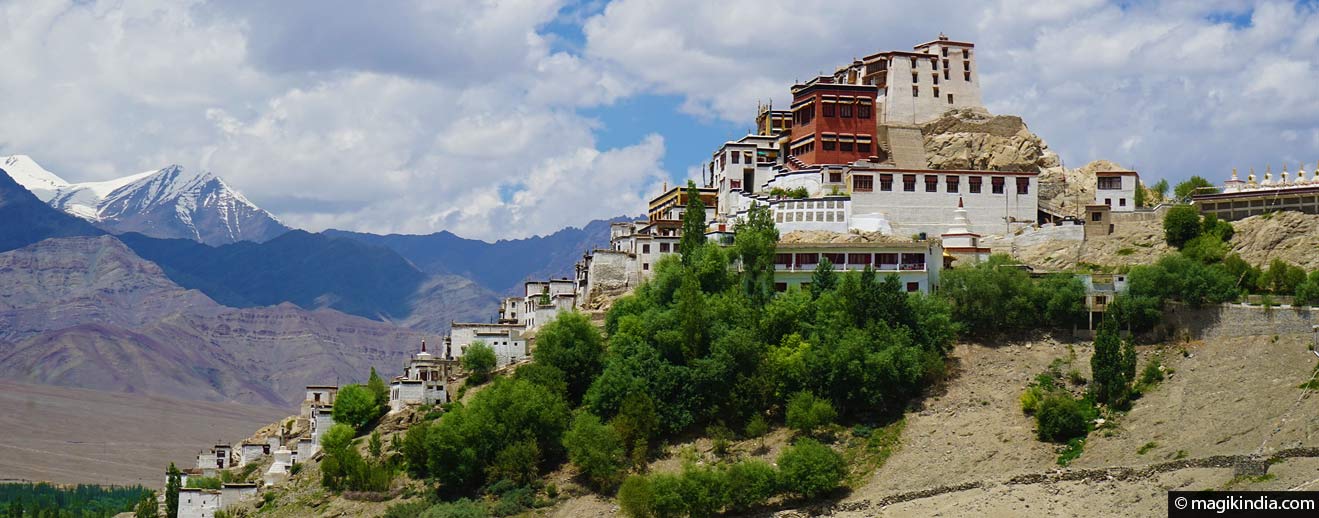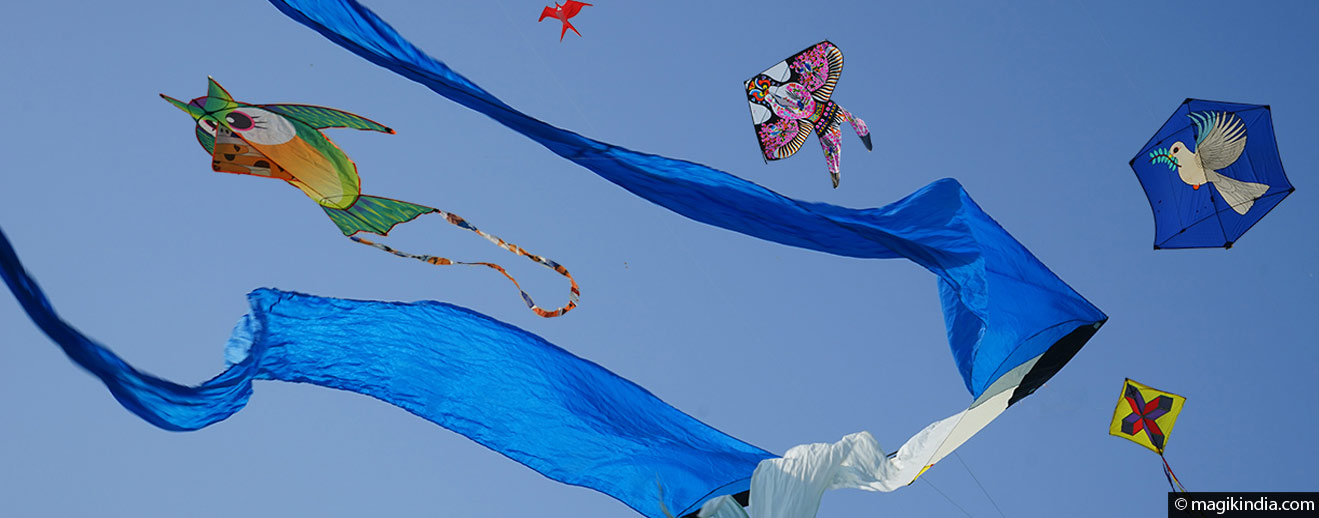
Namaskaram !
Welcome, Padharo ! I'm Mathini, a French woman who has been living in Rajasthan for 10 years. Despite being imbued with Indian culture from a young age it wasn't until 2014 that my Indian adventure really began. I left everything behind in France and set off on a 6-year journey through the land of Gandhi. These adventures are gathered in this blog which aspires, in an intentionally positive spirit, to bear witness to India's remarkably diverse and multifaceted cultural heritage. If this website sparks a desire to pack your bags and set off for an Indian adventure, it will have achieved its purpose. Subh Yatra on Magik India and beautiful explorations in the sacred land of Bharat...
Among the countless small architectural gems of Shekhawati, the Chhatri of Parasrampura figures prominently. It houses the oldest frescoes of the region, illustrating in a simple, yet exquisite way, the princely life of Thakurs of the 18th century and some episodes from Hindu mythology.
I often say several lives are necessary to know India. It constantly surprises us, piques our curiosity and rekindles our thirst for discovery at every moment. The Holi festival of the Rathwas, an adivasi community of Gujarat, is one of those wonderful surprises the Indian subcontinent has in store for us. Here, the arrival of spring is not greeted with coloured powders but with very special rituals, including fire walking and a wishing merry-go-round.
The Kavant fair or Kavant Gher Mela, which is held in the village of the same name, near Chhota Udepur (Gujarat), is the last part of the spring festivities of the Adivasi Rathwa community. It takes place on the third day after the Holi festival and brings together thousands of people who come to celebrate the end of the harvest or simply gather for a good time.
Recently declared a “cultural heritage” of Madhya Pradesh, Bhagoria is a festival that not only celebrates the arrival of spring and the end of harvest, but also love! It is indeed known for its “vivaah mela”, its marriage fair. Bhagoria falls during the Hindu month of Phalgun (February/March), seven days before the Holi festival and it is celebrated enthusiastically by the Adivasi Rathwa and Bhil people
The ‘lingam’ or ‘Shiva-lingam’ is one of India’s most emblematic hindu representation, and one of the most powerful. Some theories trace the lingam back to the ancient fertility cults probably due to its phallic form. But though it is easy to jump to conclusions, it is a mistake to think of the Shiva lingam in purely sexual terms; The Sanskrit word lingam means ‘sign’ or ‘symbol’. So the literal meaning of Shiva lingam is ‘Shiva’s sign”. It is the symbolic form of the god Shiva, the divinity without form, the source of the universe, the infinite into which everything merges at the end of time.
Leh, capital of Ladakh, reveals a very different side of Himalayas. Here verdant meadows give way to grandiose mountains whose bare austerity is broken only by white-clad monasteries. The air is bracing and the faces make one think of nearby Tibet.
Uttarayan, the time of year when the sun starts its northward journey, is celebrated in Gujarat state with a kite festival that’s totally poetic. All day long thousands of multi-coloured kites drift endlessly across the sky, and when night falls the sky is lit by a myriad paper lanterns…

